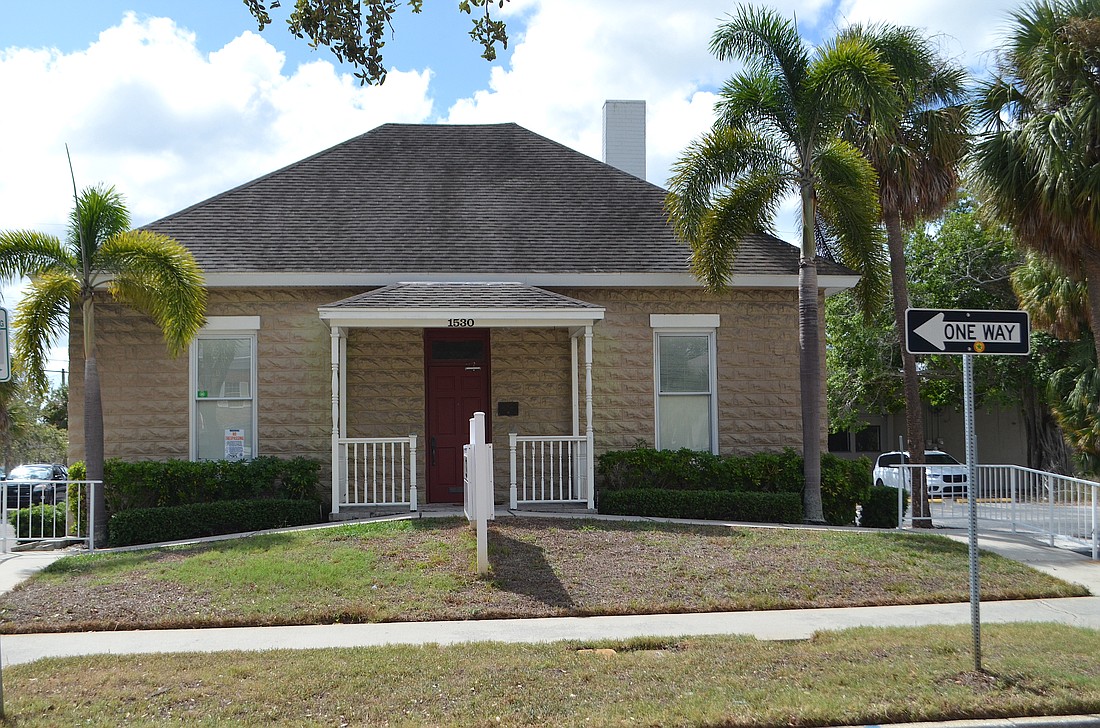- July 26, 2024
-
-
Loading

Loading

What to do with a designated historic property the Historic Preservation Board wants to keep, but that which nobody else apparently wants, was the question facing the Sarasota City Commission on Monday.
The disposition of a designated historic building among the 3.1 acres tabled during an Oct. 2, 2023 meeting, representatives of Orange Pineapple LLC were back before city commissioners Monday, appealing the Historic Preservation Board’s denial of the developer’s request to demolish the former home of George McAlpin, which was built in 1910.
The afternoonlong hearing drew a second stalemate, eventually leading to the issue being tabled a second time to the commission’s May 6 meeting.

In June 2023, Orange Pineapple acquired seven parcels totaling 3.1 acres in downtown. It renewed its request to demolish the McAlpin House, which poses an impediment to its redevelopment plans along Cross Street. The company is also working with staff on a request the city vacate Cross Street.
Upon the reopening of the public hearing, attorney Patrick Seidensticker told commissioners the developer has undertaken exhaustive measures to relocate the home that is now a long-vacant one-time office building that has a decidedly non-historic addition to the rear of the original structure plus one side that has been modified and is no longer in its original condition.
The primary historic characteristic of the small, square building is its construction of rare rusticated blocks, created by McAlpin himself, who is also credited with bringing concrete construction to the city. Senior Planner Clifford Smith, the city’s historic preservation expert, said the house is one of only a half-dozen examples of rusticated brick construction in the city.
As detailed in a McAlpin House Relocation Effort Memorandum to the city, Seidensticker wrote that relocation efforts failed generally because:
“Additionally, applicant has worked in concert with design and architecture teams to determine if integrating the McAlpin House, in its entirety, into any future development is feasible,” the memo read. “Due to the size and orientation of the structure as a whole, as well as aesthetic considerations, keeping the structure fully intact has also been determined not to be feasible.”
Smith was among those who disagreed with the developer’s assessments, saying it is documented that the building can be moved. A prior would-be developer had planned to move it to the nearby former location of Nancy’s Bar-B-Q at Pineapple Avenue. He also took exception to the portrayal of the aesthetic of the structure.

“Aesthetically, it’s a perfect example of that historic structure,” Smith said. “It is what it shows itself to be, a rusticated block structure. I think aesthetically it is giving you exactly what it is intended to be.”
Added Karen DeFazio, program director for the Sarasota Alliance of Historic Preservation, “When the investors purchased this property the Historic McAlpin House as part of their assembled parcels to develop, they were aware that this is a well-maintained, protected and locally designated historic resource. Our history may not always be as grand as the Belle Haven or have the look that some architects prize, but it is ours, and it is what makes Sarasota unique.”
When questioned on that point by Vice Mayor Jen Ahearn-Koch, Seidensticker said he can’t speak for what Pineapple Orange knew when it purchased the site because he was not involved at the time.
He did say that the company has worked to find a receiver for the building and has offered to pay to move it, but nobody wants it. Along with Chris Gallagher and George Scarf of Hoyt Architects, he displayed a rendering of building that incorporates two sides of the house in its approximate location with a historic marker describing what once stood there.
“There were numerous leads that we had and we followed up on each of them,” Seidensticker said. “Unfortunately, each option was deemed not feasible either because of the location or size of the lot would not allow for the structure to be physically moved or because the interested parties determined that the structure did not suit their needs.”
Those conversations, the memo to the city read, involved discussions with 17 parties and four house movers.
Seidensticker reiterated the developer and its project planners need some level of finality to the McAlpin House issue to continue with its planning. A historic property transfer of development rights was floated as an idea, but work to create craft such an ordinance is in the early stages.
After Commissioner Erik Arroyo suggested the city consider alternative sites, such as Payne Park, to relocate the house, he suggested continuing the hearing a second time until May 6. That will allow time to expire alternative locations and also to better determine how long a transfer of development rights ordinance will take and, as City Attorney Robert Fournier suggested, if the ordinance can be “finessed” to be of benefit in this case.